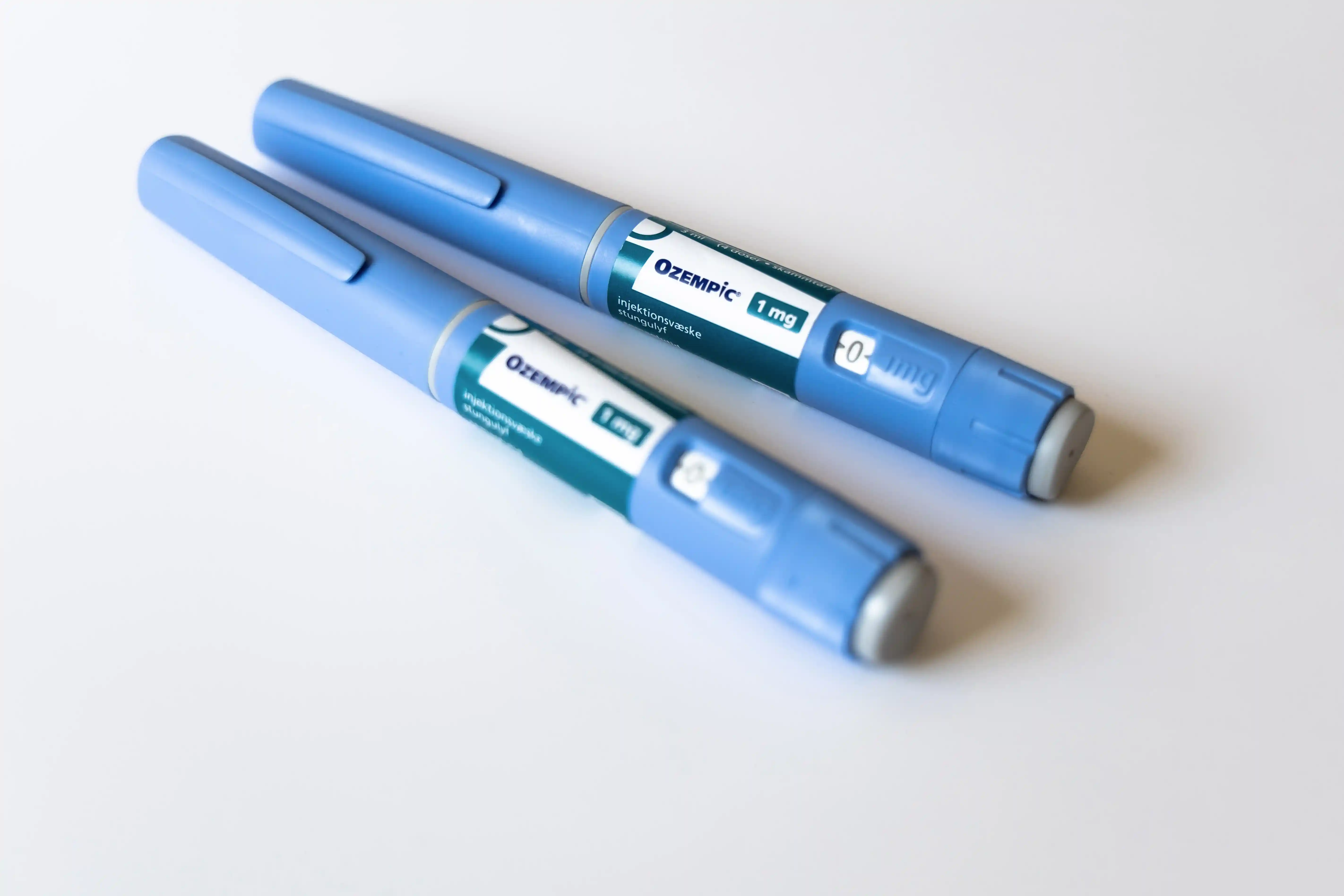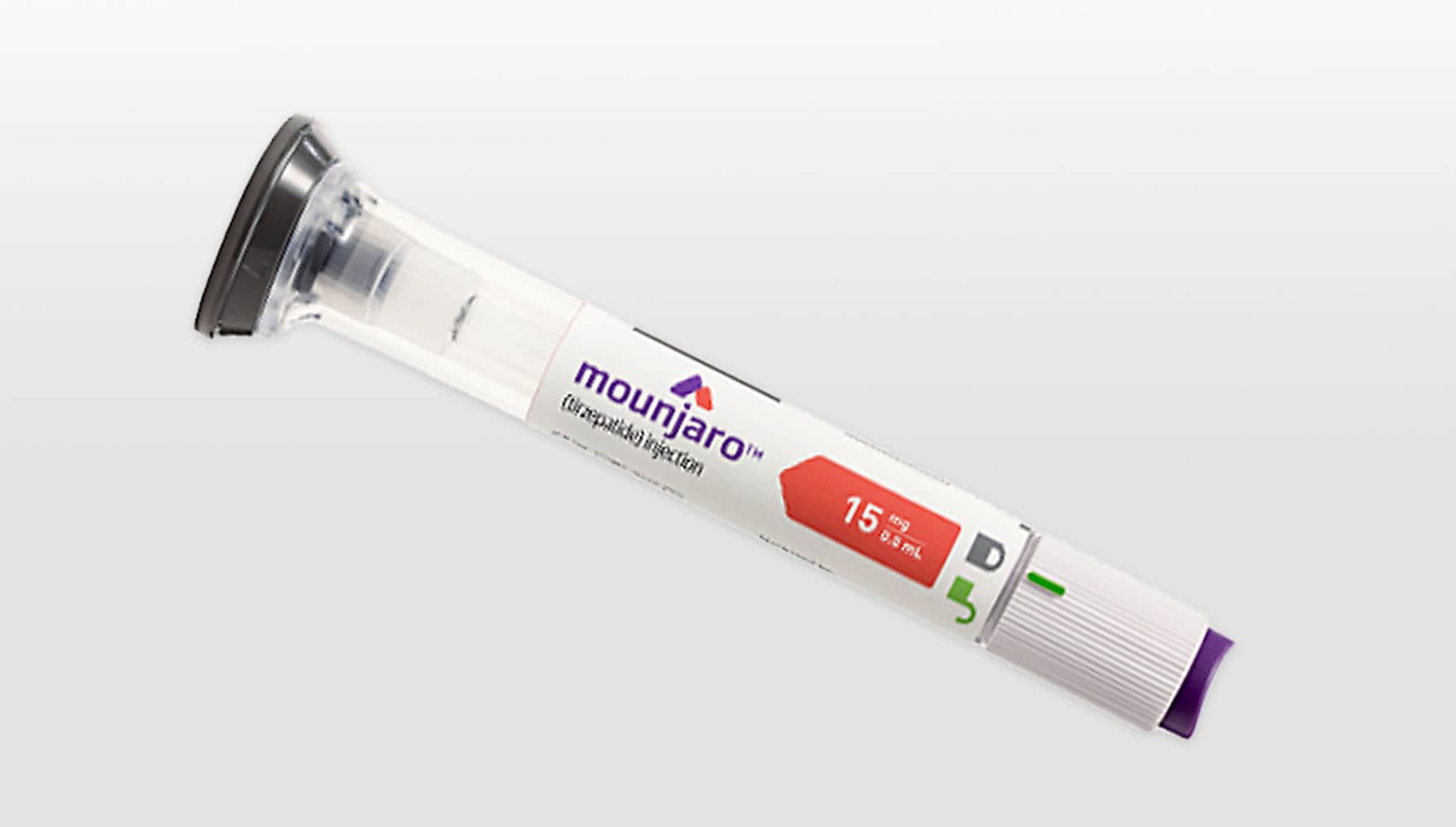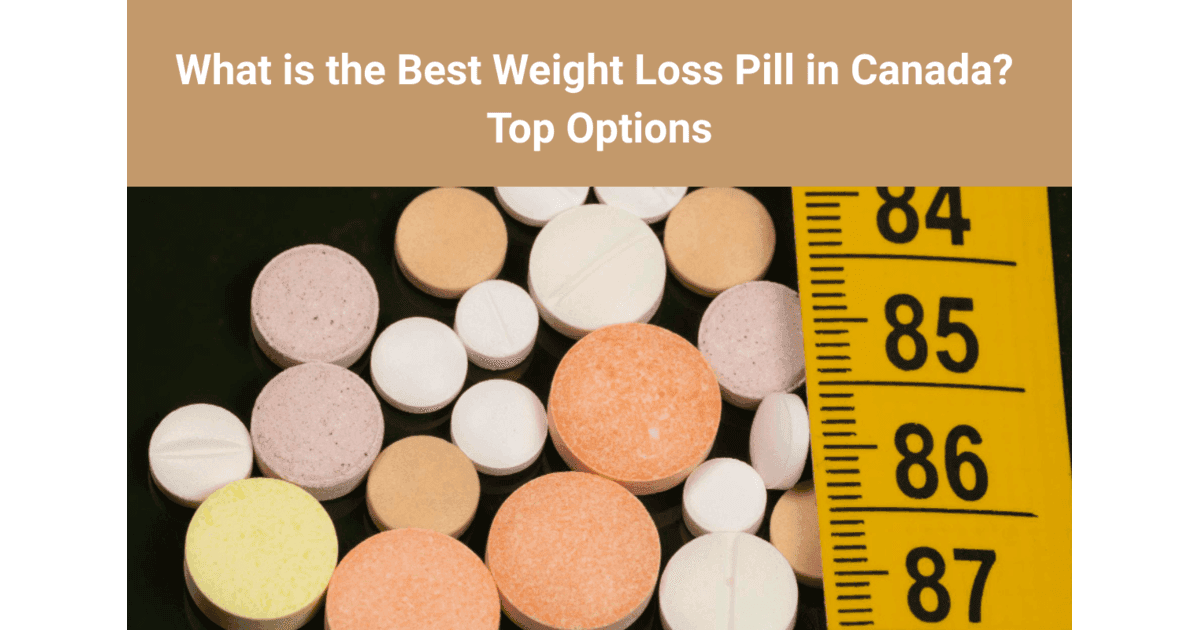Mounjaro and Ozempic are medications approved to help control blood sugar levels in adults with type 2 diabetes. Both medications can also result in significant weight loss and have off-label uses. Ozempic is also approved to lower the risk of a major cardiovascular event (such as a heart attack or stroke) in patients with type 2 diabetes. Mounjaro has not yet received this indication, although studies are ongoing.
The brand names Mounjaro (tripeptide) and Ozempic (semaglutide) may lead to significant weight loss, but Health Canada has not yet specifically approved them for this use. However, your healthcare provider might prescribe one of these medications "off-label" for weight loss, which means it's prescribed for a generally accepted use but not yet specifically approved by Health Canada or listed in package labeling.
If weight loss is your main goal, you have other options as well. Wegovy (semaglutide) and Zepbound (tripeptide) are the brand-name products for these medications that are approved for long-term weight loss. Zepbound has yet to be approved by Health Canada for weight loss in Canada. Gastrointestinal side effects, like nausea and diarrhea, are the most common side effects seen with these medications. Increasing the dose, as directed by your healthcare provider, may help you more effectively manage the stomach side effects.
How does Ozempic and Mounjaro work?
Both Ozempic and Mounjaro are classified as incretin mimetics. These types of drugs mimic the effects of naturally occurring hormones that are released after meals. Ozempic acts as a GLP-1 agonist, slowing down gastric emptying while making you feel fuller. In addition to a GLP-1 agonist, Mounjaro is a glucose-dependent insulinotropic polypeptide (GIP) agonist that stimulates insulin production, controls appetite, and reduces blood glucose levels. It’s worth noting that Mounjaro is the very first diabetic drug that simultaneously activates two receptors. That might be why it helps with higher weight loss than Ozempic.
Which is more effective for weight loss - Mounjaro or Ozempic?
In a phase 3 clinical trial, researchers studied the effects of different doses of Mounjaro versus Ozempic on the change in A1C levels. A1C levels measure the percentage of glycated hemoglobin, the portion of sugar molecules bound to red blood cells. Glycated hemoglobin is normal in healthy individuals; however, someone with Diabetes would have an abundance of sugar molecules entering the bloodstream, resulting in high A1C levels.
This study's sample size consisted of 1879 adults with Type-2 Diabetes. These patients' diabetes was not effectively controlled with Metformin. Over 40 weeksa 40-week period, patients were administered 5mg, 10mg, or 15 mg doses of Mounjaro or 1mg of Ozempic once a week. Initially, participants had an average A1C of 8.28% and weighed 93.7kg. For reference, normal A1C levels in healthy individuals are below 5.7%.
It was found that participants who were administered 5mg, 10mg, or 15mg of Mounjaro experienced a reduction of A1C levels by 2.01, 2.24, and 2.31 percentage points, respectively. Those who were given 1mg of Ozempic had A1C levels reduced by only 1.86. Furthermore, more drastic weight loss was observed in Mounjaro than in Ozempic. The patients on Ozempic lost an average of 5.7kg, but those on Mounjaro lost 7.6kg, 9.3kg, and 11.2 kg on 5mg, 10mg and 15mg, respectively.
Despite these telling results, this trial did not examine the same doses between both Ozempic and Mounjaro or higher doses of Ozempic. In addition, certain minorities made up only a small percentage of participants and so, results cannot be extrapolated to the general population. Considering that Mounjaro acts as a dual agonist and targets two different receptors, experts hypothesize that Mounjaro is a more effective option than Ozempic.
How Ozempic and Mounjaro are administered?
Mounjaro comes in a single-dose vial in Canada, while Ozempic comes in multi-dose prefilled pens. This means that when using Ozempic pens, you will need to add a new needle before every injection and switch the dial to the correct dose. Both drugs should be stored in the refrigerator between 36? and 46.?
Ozempic and Mounjaro are administered once a week by subcutaneous injections. Initially, they are given at a low dose to reduce the risk of side effects, and after four weeks, the dose is increased. The medicine can be injected into your thighs, stomach or arms.
The starting dose for Ozempic is 0.25mg weekly, which is then increased to 0.5mg weekly. Mounjaro treatment begins at a higher dose of 2.5mg weekly, then increases to 5mg.
After four weeks, your physician will assess your progress on the medication and may decide to increase the dose further. The maximum dose per week for Ozempic and Mounjaro are 2mg and 15mg, respectively.
Side effects comparison between Mounjaro and Ozempic
As with any medication, there is a risk of side effects. Everyone reacts differently to medications and can tend to develop more side effects than others. Ozempic and Mounjaro have comparable side effects, but patients on Mounjaro tend to report more.
Mild side effects from both drugs include diarrhea, constipation, nausea, vomiting, indigestion, abdominal pain, flatulence, and burping while Mounjaro may also cause abdominal bloating and inappetence. More severe side effects are acute gallbladder conditions, low blood sugar, pancreatitis, and severe digestive problems. To add to that, Ozempic may have a risk for diabetic retinopathy.
Before beginning any new medication, you should first consult with your physician. People respond to medications in various ways, so neither Ozempic nor Mounjaro may be the right fit for you. If your physician approves using either of these drugs for treating type 2 diabetes, then it seems that Mounjaro is the winner for its dual functionality in managing the disease. Ultimately, the decision is up to the individual and the healthcare professional.
Comparing Mounjaro vs. Ozempic Prices in Canada
Online Mounjaro cost in Canada
The dose for one Mounjaro (tirzepatide) weekly injection ranges between 5 mg and 15 mg. The typical maintenance dose for Mounjaro is 5 mg per week injected subcutaneously (under the skin). Mounjaro single-dose vials are available in 2.5 mg, 5 mg, 7.5 mg, 10 mg, 12.5 and 15 mg doses. The maximum dosage is 15 mg subcutaneously once weekly.
- For example, a carton of four 5 mg Mounjaro single-dose vials (each delivers 5 mg per injection) costs approximately $400 - $530. Prices will vary based on insurance coverage. Most insurance companies in Canada do not provide coverage for Mounjaro for weight loss.
- All of the Mounjaro vials' strengths are roughly the same price.
Online Ozempic cost in Canada
The dose for one Ozempic (semaglutide) weekly injection ranges between 0.5 mg and 2 mg. The typical maintenance dose for Ozempic is 0.5 to 1 mg injected subcutaneously (under the skin) once a week. Ozempic injection pens are available in 2 mg, 4 mg and 8 mg per pen (multi-use, single patient pen). The maximum recommended dose of Ozempic is 2 mg weekly.
- For example, the cost for a 3 mL Ozempic pen that holds a total of 4 mg and delivers 1 mg per injection is approximately $290. If you use a 1 mg dose, this pen would last you for one month (one 1 mg dose per week for 4 weeks). Prices will vary based on insurance coverage. Most insurance companies in Canada do not provide coverage for Ozempic for weight loss.
- Each carton also comes with NovoFine Plus needles.
- All of the Ozempic pen strengths are about the same price.
Switching from Mounjaro to Ozempic or Ozempic to Mounjaro for weight loss?
Transitioning from Mounjaro to Ozempic requires careful planning and coordination with your healthcare provider. Here are some essential tips to help manage this process:
Before making any changes to your medication, discuss it with your provider. They can provide personalized advice based on your medical history, current health status, and treatment goals. Your provider will help you determine the appropriate starting dose of Ozempic and develop a titration plan to ensure a smooth transition.
When switching from Mounjaro to Ozempic, a gradual dose adjustment is essential to minimize side effects and maintain glycemic control. Your provider will likely recommend starting at the lowest dose of Ozempic and increasing it over several weeks. This helps your body adjust to the new medication and reduces side effects.
Regular monitoring of your blood glucose levels is crucial during the transition period. This helps ensure that your new medication regimen effectively manages your diabetes. Record your blood sugar readings and share them with your doctor to make any necessary adjustments to your treatment plan.
Mounjaro and Ozempic can cause gastrointestinal side effects such as nausea, vomiting, and diarrhea. Being aware of these potential side effects and knowing how to manage them can make the transition smoother. Eating smaller, more frequent meals and staying hydrated can help alleviate some of these symptoms.
Following a healthy diet and exercise routine is vital when transitioning between medications. A balanced diet rich in vegetables, fruits, lean proteins, and whole grains, along with regular physical activity, can enhance the effectiveness of your medication and support overall health.
Schedule regular appointments with your doctor to assess your progress and make any necessary adjustments to your treatment plan. These visits are an opportunity to discuss any concerns, evaluate the effectiveness of the new medication, and ensure that you are on track to achieve your health goals.
Transitioning from Mounjaro to Ozempic requires careful consideration and guidance from a healthcare professional. By understanding the differences between these medications and following these tips, you can make an informed decision and manage your diabetes and weight loss journey effectively.
DooÜ: Weight loss
The information provided above is for informational purposes only and should not be used as a substitute for professional medical advice, diagnosis, or treatment. DooÜ does not guarantee the accuracy or completeness of this information. It is important to consult with a medical professional before starting, changing, or stopping any medical treatment.














































